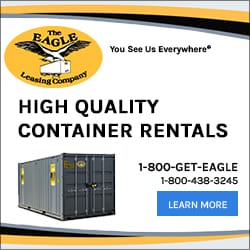
The Origins of the Modern Storage Container: The CONEX Box
Curious about the modern storage container’s beginnings? Let’s dive into the history of the CONEX Box, the brainchild of the U.S. Military and the origin of the term “Container Express.”
If you’ve seen a storage container, you’ve witnessed the legacy of the Conex box. These versatile containers serve various purposes, from aiding in residential moves to business renovations. Many people even convert them into homes and business spaces. Developed initially by the U.S. Military, they share the same ingenuity and reliability as Jeep SUVs, Silly Putty, weather radar, and duct tape.
A Brief Guide to CONEX Box History:
Whether you’re looking to purchase Conex boxes for your belongings or just want to learn more about their background, you’ll benefit from our Eagle Leasing Conex Box Buyer’s Guide.
The Need for Safe Transport:
Conex boxes, also known as shipping containers, trace back to World War II when they were called “transporters.” During the war, the U.S. Army grappled with cargo delays due to the time required for loading and unloading ships. This challenge resulted in losses of money and resources for troops.
To address these issues, the U.S. Army Transportation Museum highlights that, in 1948, the Army started experimenting with reusable steel containers that could carry approximately 9,000 pounds. These initial Conex boxes measured around 8-by-6-by-6 feet and featured double doors on one end, elevated skids on the bottom, and lifting rings on the top.
Successful Tests and Development:
Tests were successful enough to expand the program in 1951, with an additional 100 transporters commissioned for use by the Far East Command in the Korean War. These prototype boxes shipped items from Japan to Korea, ending their journey on railroad cars directly to supply points. This testing evaluated how well the containers carried essential and sensitive items.
The Conex box had similar dimensions to World War II transporters, but its modular design enabled easier transportation, stacking, and repurposing upon reaching its destination. Alongside the standard size, a new half-sized box was introduced, measuring 6 feet long, 4 feet wide, and 6 feet high.

Expanding the CONEX Box Legacy:
The success of the program prompted further expansion in 1952, with modifications including a name change to “Container Express” (the source of “Conex box”). This development improved transportation times, reducing shipments from a typical 55 days to under 35 days.
The Vietnam War and Beyond:
These Containers played a pivotal role in the Vietnam War, delivering spare parts, supplies, and more to U.S. troops throughout the region. Many boxes were repurposed into command posts, bunkers, and medical dispensaries, proving their adaptability.
The private sector soon recognized the potential of Conex boxes. Commercial industries began developing their versions, while Sea-Land Container Services designed ships specifically to transport storage containers. This evolution gave rise to the intermodal container, following the ISO standard for shipping containers.
Today, over 95% of shipping containers are partially or entirely based on the Conex box design. Alongside tape and nails, the Conex box stands as one of the most influential developments in transportation history due to its widespread popularity and adoption as the ISO standard.
CONEX Storage Container Rental with Eagle Leasing
At Eagle Leasing, we appreciate the military’s contributions and how their innovations have shaped the modern world. Since 1967, we’ve seen the growth of CONEX boxes and their influence on our industry.
We offer CONEX storage container rentals and leases to customers in need of shipping containers. Additionally, we provide customized and enhanced storage containers, following the modular designs of the original CONEX boxes.
For product quality and customer satisfaction, contact us today. Let us assist you with your storage and transportation needs here at Eagle Leasing!








